Electric water pumps are becoming an increasingly popular choice in a variety of applications, from programmable additional heating in vehicles to precision and efficiency in industrial settings. But how do these pumps work? In this blog post, we will explore the inner workings of electric water pumps, from the electrical energy input to the mechanical Read more
Grundfos
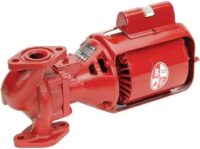
Electric water pumps are becoming an increasingly popular choice in a variety of applications, from programmable additional heating in vehicles to precision and efficiency in industrial settings. But how do these pumps work?
In this blog post, we will explore the inner workings of electric water pumps, from the electrical energy input to the mechanical energy output that drives the pumping process. We will also take a look at the main uses of electric water truck pump and how they have evolved over time. So, if you are curious about the technology behind these pumps, just keep reading.
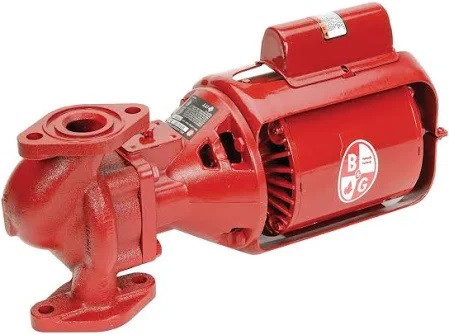
How Electric Water Pumps Work
Electric water pumps are powered by electricity, which is a great option for those who want to be environmentally conscious. These pumps can be used to move water in or around a home or business, and they are very versatile in their uses. If you’re considering installing an electric water pump system at your property, here’s what you need to know!
The Basic components of an electric water pump
There are three basic components that make up an electric pump system: the motor, the casing, and the impeller. The motor is what actually moves the water through the system; it’s powered by electricity, which comes from either a wall outlet or solar panels on your roof. The casing houses all of these components and keeps them safe from outside elements like dirt and debris (you’ll need to clean this part regularly). Finally, there’s the impeller—this is what actually pumps water through your pipes once all of those other parts have been put together properly!
How electric water pumps move water
The mechanics of an electric water pump are fairly straightforward: they use electricity to spin a turbine or impeller, which then moves water through pipes and into your house. The turbine or impeller itself is connected to two shafts: one that runs vertically and one that runs horizontally; when the shafts spin together they create suction pressure within the pipe system that moves the water up from its source (such as a well) into your house where it can be used for drinking or bathing purposes.”
Types of Electric Water Pumps
While electric water pumps come in all designs, shapes and sizes, it is important to understand their differences and how they fit your needs. In this section, we’ll provide a brief description of 3 of these pumps, how they compare and how they work, namely: submersible pumps, centrifugal pumps, and positive displacement pumps.
Submersible pumps
Submersible pumps are the most common type of pump used in residential homes and commercial businesses. They work by using a spinning impeller to force water through the pump’s body and out its discharge port. The process is similar to how a toilet works—the spinning impeller creates a suction that pulls dirty water into the pump’s body, where it’s cleaned by internal components before being pushed out of the discharge port.
Centrifugal pumps
Centrifugal pumps are often used when there isn’t room for a submersible pump, such as in large industrial settings where there is ample space for them to be installed above ground. Centrifugal pumps work by harnessing kinetic energy from moving parts to create pressure within the pump’s body, which forces dirty water through an intake port before being discharged through another port on the opposite side of the body (usually positioned above ground).
Positive Displacement pumps
Positive displacement pumps are the most common type of electric water pump. They are also known as constant-displacement pumps because they can deliver a set volume of water for each revolution.
Unlike centrifugal pumps, which draw water into a rotating impeller and force it out through a discharge pipe, positive displacement pumps move water through the entire pump without relying on any movement outside the pump’s casing. The impeller draws in a small amount of water at its center and pushes it out through an outlet opening. This action creates a vacuum behind the impeller that pulls in more water to replace what has been pumped out, maintaining constant flow throughout the entire cycle.
Conclusion
It’s clear that electric water pumps are a necessity for any home. They provide a safe and efficient way to transfer water from one location to another. Electric water pumps can be purchased in a variety of different forms, so it’s important to carefully consider the factors that matter most when choosing your preferred model. This can include things like size, design, power supply, and cost.
In this article, you have learned the importance and function of electric water pumps. You have also been given information on 3 different types of electric water pumps available, as well as the factors to consider when choosing one. Hopefully, the information provided will help you select the one best suited to your needs.

Optimal plumbing system design combines best practices on both sides of the flange. Designing, installing and maintaining perfect loops ensures that we deliver superior comfort, energy efficiency and reliability to our customers. Cody Mack and Max Rohr welcome Grundfos industry expert Becky Henderson from The Perfect Loop training series to discuss domestic hot water recirculation systems during this extended edition of Coffee with Caleffi™. The Read more
Optimal plumbing system design combines best practices on both sides of the flange. Designing, installing and maintaining perfect loops ensures that we deliver superior comfort, energy efficiency and reliability to our customers. Cody Mack and Max Rohr welcome Grundfos industry expert Becky Henderson from The Perfect Loop training series to discuss domestic hot water recirculation systems during this extended edition of Coffee with Caleffi™.
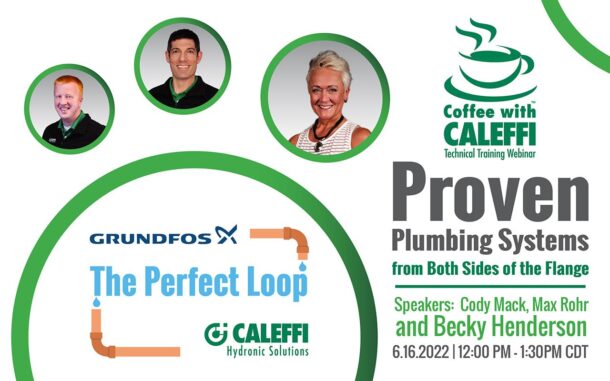
The Perfect Loop is a hands-on and complimentary contractor training series that combines both companies’ expertise in sustainable plumbing and hydronic technologies. In this special edition of Coffee with Caleffi, we are proud to offer the series in a convenient, virtual fashion.
You’ll learn:
→ Sizing basics: GPM, pipe sizing, friction loss
→ Balancing basics: Valve choices and commissioning
→ Mixing basics: Valve choices and piping
→ Preventing recirculation creep
→ Cross connections
→ Maintenance: Tips and Tricks
Becky is Grundfos lead key account manager and is responsible for seven rep agencies covering 13 states. She enjoys running, motorcycle riding and spending time with her daughter in her free time. Becky has the innate ability to make learning fun and engaging.
Cody has nearly 20 years’ experience as installation contractor, service technician, application engineer, training manager and now product manager for Caleffi. Our audience will appreciate his thoughtful yet humorous content delivery combined with his practical, common sense product approach.
Max is Caleffi education and industry engagement manager leading interactions with trade associations, committees, industry initiatives and collaborative manufacturer partners. Max – a self-described “energy nerd” – has 20+ years of work experience in installation, distribution, manufacturers’ representative and manufacturing roles. Max is a self-described “energy nerd.”
Coffee with Caleffi technical training webinars are free and intended forcontractors, engineers, designers and wholesalers. By submitting your webinar registration, you are consenting to email communications to keep you up-to-date on industry news.
It’s easy to join us! Simply register today.
A Certificate of Attendance is emailed to attendees following the webinar equivalent to 1.5 PDH for continuing education. Please verify with your state/province for fulfillment compliance.
Grundfos, a global leader in water technology, and its primary owner the Grundfos Foundation announced a $65,000 donation to the American Red Cross of Central California – Central Valley Chapter in response to the recent wildfires that continue to have a devastating impact on communities in Central California. “Our thoughts are with everyone impacted by Read more
Grundfos, a global leader in water technology, and its primary owner the Grundfos Foundation announced a $65,000 donation to the American Red Cross of Central California – Central Valley Chapter in response to the recent wildfires that continue to have a devastating impact on communities in Central California.
“Our thoughts are with everyone impacted by these wildfires, some of whom must now start over,” said Antonio Rodrigues, Grundfos plant director. “This hits close to home, because it is our home. We want to help the community—our neighbors, friends and partners—who are affected by this disaster.”

Grundfos employs more than 290 employees at its manufacturing plant in Fresno, California. At the facility, the company manufactures pumps that serve customers in groundwater and irrigation, domestic heating and hot water recirculation, commercial buildings HVAC and plumbing, and industrial applications. To support production, the Fresno office houses engineering, supply chain, finance, service and IT.
The company was introduced to the American market in 1973 after its founder Poul Due Jensen had discovered a growing market for pumps in California, especially where they are essential for farms and vineyards.
On October 19, the Board of Directors of the Grundfos Foundation awarded 315,775 DKK ($50,000 USD) to the American Red Cross of Central California – Central Valley Chapter. Grundfos Americas has also awarded a $15,000 USD donation to the chapter.
“Our thoughts and prayers go out to the many victims of the wildfires. It is however heartwarming to see our colleagues in the U.S. exercising this level of compassion towards their fellow citizens. That is why we are also proud to support the Red Cross,” said Kim Nøhr Skibsted, executive director of the Grundfos Foundation.
As part of the local rebuilding efforts, Grundfos is creating a program that will provide a significant discount for a selection of its pump products to those that have lost water service due to the wildfires.
“Grundfos is committed to supporting the relief efforts for those who are being displaced or have lost homes, as well as those who are trying to save people, homes and property,” said Dieter Sauer, Grundfos Americas regional managing director. “We hope our donations encourage others to join in assisting those who have been affected.”
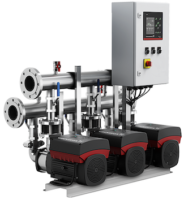
Grundfos is launching the Hydro MPC CME, the newest member of the Hydro MPC platform. The compact, reliable and energy efficient packaged pumping system is ideal for pressure boosting and HVAC applications in apartments, large homes and multistory buildings. “Our Grundfos engineering team has worked hard to expand our industry-leading Hydro MPC range to include Read more
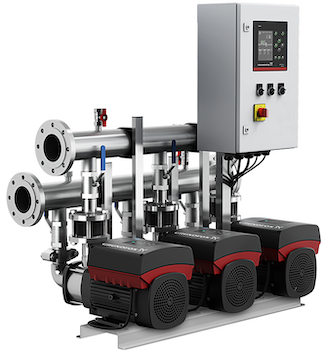 Grundfos is launching the Hydro MPC CME, the newest member of the Hydro MPC platform. The compact, reliable and energy efficient packaged pumping system is ideal for pressure boosting and HVAC applications in apartments, large homes and multistory buildings.
Grundfos is launching the Hydro MPC CME, the newest member of the Hydro MPC platform. The compact, reliable and energy efficient packaged pumping system is ideal for pressure boosting and HVAC applications in apartments, large homes and multistory buildings.
“Our Grundfos engineering team has worked hard to expand our industry-leading Hydro MPC range to include the new Hydro MPC CME,” said Greg Bretz, vice president of commercial buildings for Grundfos. “This new system will provide all the benefits of our world-class CU 352 controller, but in a more compact system with a smaller footprint.”
The Hydro MPC CME system offers superior performance and industry-leading reliability. Key features include a performance range of max 330 gpm and max pressure 145 psi; efficiency-based pump sequencing; end of curve protection; check valve failure detection, and more. Additionally, a suction pressure transducer is included for dry-running protection.
The Grundfos Hydro MPC CME will be displayed for the first time at AHR Expo in Orlando at the Orange County Convention Center from Feb. 3-5, 2020. Attendees can get a hands-on look at the Hydro MPC CME and other products and solutions, including the first end- suction pump with proportional pressure in Grundfos booth #3361.
Tech Talk to highlight pumps and considerations when dosing antimicrobials Houston — Grundfos will showcase its innovative pumping solutions and debut a new wash and clean system for the food processing industry at the 2020 International Production and Processing Expo (IPPE). At IPPE, held in Atlanta at the Georgia World Congress Center from Jan. 28-30 Read more
Tech Talk to highlight pumps and considerations when dosing antimicrobials
Houston — Grundfos will showcase its innovative pumping solutions and debut a new wash and clean system for the food processing industry at the 2020 International Production and Processing Expo (IPPE).
At IPPE, held in Atlanta at the Georgia World Congress Center from Jan. 28-30, attendees who visit booth #B7173 can speak with Grundfos product experts and interact with the latest in pumps and systems, including a fully operational peracetic acid dosing skid and the newly released Hydro HP.

One of the newest innovations from Grundfos, the Hydro HP is a high pressure clean and wash booster set that provides steady pressure from 5 gpm up to the system set point of 150, 250, 350 or 500 gpm. The Hydro HP is energy efficient, reliable and easy to maintain, offering customers full realization of ROI after the first few maintenance cycles. Attendees can see the new system first-hand at the booth.
“From the manufacturing of the drive, pump and motor to complete skids and packages, Grundfos provides a full range of solutions for processing plants,” said Jay Stellmacher, vice president of industry at Grundfos USA. “Industry-leading reliability and efficiency in all our products reduces maintenance and increases valuable uptime, providing cost savings and peace of mind for plant operators.”
For chemical dosing and water treatment needs, Grundfos’ booth will feature the accurate and reliable SMART Digital dosing pumps, as well as a Dosing Skid System (DSS) for peracetic acid applications featuring a Digital Instrumentation for Dosing (DID) measurement and monitoring system.
On Tuesday, Jan. 28 at 3:40 p.m., Jared Gabel, market development manager for water treatment at Grundfos USA, will present “Pump Features and Considerations When Dosing Peracetic Acid” on the Tech Talk stage in Hall B-B8648.
During his Tech Talk, Gabel will discuss how food processing plants can benefit from stepper motor technology paired with digital measurement and controls systems when feeding of peracetic acid. Gabel is an expert in dosing and disinfection who has trained industry professionals throughout North America on the functionality and applications of chemical dosing pumps.
“Stepper motors at 100% look like every other method of pumping. That all changes during turndown and the advantages of the stepper motor becomes evident,” said Gabel. “Attendees of this talk will have a better grasp on the role stepper motors play in digital dosing pumps and how combining smart technologies enable safe and reliable chemical dosing that saves maintenance time and avoids unnecessary equipment costs.”
To learn more about Grundfos products and meet with Grundfos product specialists, visit booth #B7173.
